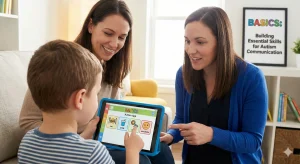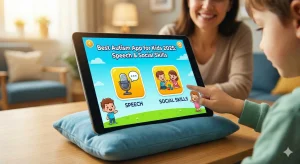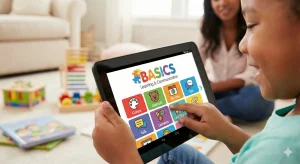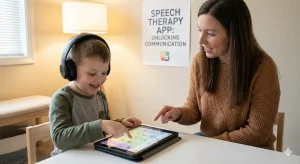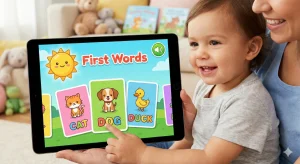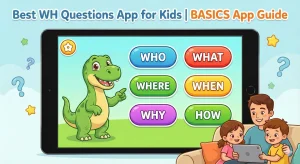Emotional Regulation in Children: A Parent’s Guide to Helping
By Wellness Hub
Last Updated: September 10, 2024
Have you ever wondered why your child struggles to manage their emotions? Maybe it’s a meltdown over a minor frustration or an outburst when things don’t go as planned. If you’ve been there, you’re not alone. Emotional regulation in children isn’t just about staying calm; it’s crucial for their overall development. Many parents face these challenges, often feeling unsure of how best to help their children handle their big feelings. But what if I told you that your role as a parent is one of the most powerful influences on your child’s ability to navigate their emotions?
Emotional regulation —simply put, the ability to recognize, understand, and manage our emotions—is a crucial skill that helps children thrive. It’s more than just “keeping calm”; it’s about learning to express emotions in healthy ways, bounce back from setbacks, and interact positively with others. For children, developing emotional regulation skills can lead to better friendships, success in school, and a happier, more balanced life.
Understanding Emotional Regulation in Children
What is Emotional Regulation?
Emotional regulation is the ability to understand, manage, and respond to emotions in a healthy way. It’s like having an internal compass that guides children on how to handle feelings like anger, sadness, excitement, or fear. Think of it as a skill that helps your child navigate through the ups and downs of life, allowing them to express their emotions appropriately and bounce back from challenges. Just like learning to ride a bike or tie shoelaces, emotional regulation doesn’t come naturally—it’s something kids develop over time with guidance and practice.
Also read: Emotional Regulation for Kids: Easy Tips and Activities
Why is Emotional Regulation Important for Children?
Developing emotional regulation is a key part of your child’s overall growth, impacting everything from their social skills to their academic performance and mental well-being. Here’s why it’s so crucial:
- Improved Social Skills: Children who can manage their emotions are better at making friends, resolving conflicts, and maintaining healthy relationships. They learn to communicate how they feel, listen to others, and navigate social situations without letting emotions overwhelm them.
- Academic Success: Emotional regulation is linked to better focus, problem-solving skills, and resilience in the face of academic challenges. When children can keep their emotions in check, they’re more likely to stay engaged in learning, ask for help when needed, and persist through difficult tasks.
- Overall Well-Being: Beyond school and friendships, emotional regulation contributes to a child’s mental and emotional health. It helps them build self-esteem, cope with stress, and reduces the likelihood of developing anxiety or other emotional difficulties. Children who are equipped with these skills tend to feel more in control of their lives and are better prepared to handle whatever comes their way.
Also read: Fun 7 Activities to Boost Emotional Regulation in Young Children
The Role of Parents in Emotional Regulation
Parents play a powerful role in shaping how their children understand and manage emotions. Your actions, reactions, and the overall atmosphere you create at home can significantly influence your child’s ability to regulate their emotions. Let’s explore the key ways parents can nurture emotional regulation in their children.
Modeling Emotional Behavior
Observation and Learning:
Children are like sponges—they soak up everything around them, including how we handle emotions. When you’re stuck in traffic, feeling overwhelmed, or facing a stressful day, your child is watching and learning. If you manage these situations calmly, even when you feel frustrated, it teaches your child that it’s okay to have big emotions, and there are healthy ways to handle them. For instance, saying something like, “I’m feeling stressed right now, so I’m going to take a few deep breaths,” not only models emotional regulation but also gives your child a simple tool they can use.
Real-Life Example:
Imagine you’re rushing in the morning, and things aren’t going as planned. Instead of snapping or showing frustration, you calmly say, “Looks like we’re having a busy morning! Let’s take a deep breath and focus on getting one thing done at a time.” This not only diffuses the tension but also teaches your child how to approach stressful situations with composure.
Also read: Teaching Kids Emotional Awareness: 8 Simple Methods
Creating an Emotionally Supportive Environment
Home Climate:
A positive and supportive home environment is like fertile soil for a child’s emotional growth. When children feel heard, understood, and validated, they’re more likely to express their emotions and learn how to handle them. Consistent emotional support from parents—whether it’s listening without judgment or acknowledging their feelings—helps build a secure foundation where children feel safe to explore their emotions.
Balanced Approach:
It’s important to strike a balance between acknowledging your child’s feelings and guiding them towards solutions. For example, if your child is upset about losing a game, instead of simply saying, “It’s just a game, don’t be upset,” try saying, “I see you’re disappointed, and that’s okay. What could we try differently next time?” This approach validates their emotions while gently guiding them towards problem-solving.
Parent Socialization of Emotion (PSE)
Indirect Guidance:
Parents often guide their children’s emotional regulation without even realizing it. The way you handle your own emotions sets an unspoken example. If you generally maintain a positive outlook and manage your emotions well, your child learns these behaviors through observation, even without direct teaching.
Direct Guidance:
Beyond indirect modeling, direct conversations about emotions are vital. Talking openly about feelings—whether it’s a simple “I feel happy today because…” or “I was a bit sad when…”—helps children understand that emotions are normal and manageable. Encouraging your child to name their emotions and discuss what they’re feeling can help demystify emotions and make them less overwhelming.
Providing Consistent and Supportive Responses
Supportive vs. Punitive Responses:
How you respond to your child’s emotions can either support their emotional growth or hinder it. Supportive responses, like problem-solving together or offering comfort, encourage healthy emotional expression. On the other hand, punitive responses—like dismissing their feelings or punishing them for showing emotions—can teach children to suppress their feelings, which isn’t helpful in the long run.
Encouraging Expression:
Create a safe space where your child feels comfortable expressing their emotions without fear of judgment or punishment. This could be as simple as sitting with them and listening when they’re upset or letting them know it’s okay to cry or be angry. Reinforcing positive emotional behaviors can go a long way in helping your child feel understood and supported.
Supportive vs. Punitive Responses
| Supportive Response | Punitive Response |
|---|---|
| Acknowledging feelings – Example: “I see you’re upset; let’s talk about it.” – Helps the child feel understood and valued. | Ignoring or dismissing feelings – Example: “Stop crying, it’s not a big deal.” – Makes the child feel their emotions are wrong or unimportant. |
| Problem-solving together: – Example: “What can we do to solve this problem?” – Encourages the child to think of solutions and builds resilience. | Punishing or scolding: – Example: “Go to your room; I don’t want to hear it.” – Can make the child feel ashamed or afraid of expressing emotions. |
| Offering comfort: – Example: “It’s okay to feel sad; I’m here for you.” – Provides emotional support and reassures the child. | Shaming the child: – Example: “You’re acting like a baby.” – Damages the child’s self-esteem and may cause them to hide emotions. |
| Encouraging expression: – Example: “Would you like to tell me what’s bothering you?” – Promotes open communication and emotional awareness. | Minimizing emotions: – Example: “You’re overreacting, calm down.” – Dismisses the child’s feelings and discourages them from sharing. |
| Validating emotions: – Example: “I understand why that made you angry.” – Shows empathy and helps the child process their emotions. | Criticizing or mocking: – Example: “You always get upset over nothing.” – Increases frustration and can lead to emotional suppression. |
The Impact of Positive Emotional Expression
1. Positive Emotions at Home:
Expressing positive emotions at home—such as joy, affection, and empathy—sets the stage for your child to do the same. When you show kindness, patience, and a sense of humor, your child learns that these are healthy ways to respond to the world around them.
2. Research Insight:
Studies have shown that children whose parents express more positive emotions tend to develop better emotional regulation skills. By regularly displaying and encouraging positive emotions, you’re not just helping your child feel good in the moment—you’re equipping them with tools they’ll use throughout their life.
Conclusion
As a parent, you play a big role in helping your child manage their emotions. By showing calm behavior, creating a caring home, and talking about feelings, you teach your child important skills. These small actions, like taking deep breaths when stressed or listening to your child, help them learn to handle their own emotions. Remember, learning to manage emotions takes time, and every bit of support you give helps your child grow stronger and more confident.
Your support not only helps with their emotions but also makes a big difference in their overall happiness, school, and friendships. Even on tough days, know that your efforts matter a lot. If you need more help or ideas, Wellness Hub has many resources to guide you. You’re not alone, and there are tools available to support you and your child on this journey. Keep going—your patience and love are helping your child become their best self.
Frequently Asked Questions:
1. What is emotional regulation in children?
Emotional regulation in children is the ability to understand, manage, and respond to their emotions in a healthy way. It helps them express feelings like anger, sadness, or joy without becoming overwhelmed.
2. How can parents help their children develop emotional regulation?
Parents can help by modeling calm behavior, creating a supportive home environment, talking about feelings, and encouraging open communication. Consistent support and patience are key in teaching children how to manage their emotions.
3. Why is emotional regulation important for kids?
Emotional regulation is important because it helps children build better social skills, succeed in school, and maintain overall mental and emotional well-being. It teaches them to handle challenges and interact positively with others.
4. What are some simple ways to teach emotional regulation to kids?
You can teach emotional regulation by showing how you handle your own emotions, discussing feelings openly, and using tools like emotions charts or simple breathing exercises to help your child manage stress.
5. How does a positive home environment affect a child’s emotional regulation?
A positive home environment, where emotions are understood and supported, helps children feel safe to express themselves. This support builds their confidence and skills in managing their own emotions effectively.
6. What role do parents play in a child’s emotional development?
Parents play a critical role in their child’s emotional development by modeling appropriate emotional responses, providing guidance, and creating a nurturing space where emotions are openly discussed and respected.
7. How can parents create an emotionally supportive environment at home?
Parents can create an emotionally supportive environment by validating their child’s feelings, encouraging expression, and balancing emotional support with problem-solving. This helps children feel understood and teaches them how to handle their emotions.
8. Can parents’ own emotional behavior affect their child’s emotional regulation?
Yes, children learn a lot by observing their parents. When parents manage their emotions calmly and positively, it sets an example for children, showing them how to handle their own feelings in a healthy way.
9. What are the long-term benefits of emotional regulation in children?
Long-term benefits of emotional regulation include better relationships, improved academic performance, higher self-esteem, and reduced anxiety. It prepares children to face life’s challenges with resilience and confidence.
10. Where can I find more resources on supporting my child’s emotional regulation?
You can explore additional resources, tips, and guidance at Wellness Hub, where you’ll find expert advice on helping your child develop strong emotional regulation skills.
About Author:
Lasya Vooturi,
Clinical Psychologist (A) & Behavioral Therapist
Lasya holds a Professional Diploma in Clinical Psychology from Amity University, where she deepened her understanding of psychological principles from March 2023 to March 2024. With over a year of dedicated experience as a Behavioral Therapist, Lasya has honed her skills in applying effective therapy techniques tailored to individual needs. Fluent in Telugu, Hindi, and English, she is adept at connecting with a diverse range of clients, ensuring comprehensive communication and understanding. Lasya’s approach is grounded in empathy and scientific rigor, making her a trusted ally in navigating mental health challenges.
Book your Free Consultation Today
Parent/Caregiver Info:
Client’s Details:
* Error Message

